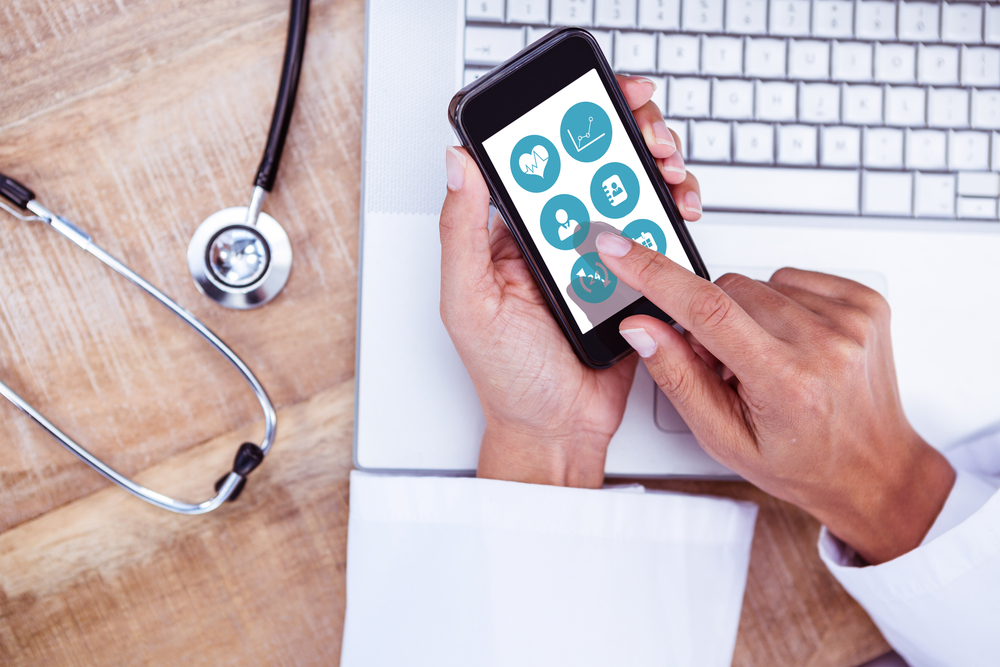In 2019, creating a successful healthcare app has never been harder.
The days of creating an app, sending it to market and having it be successful because seeing healthcare on the app store was a novelty are over.
Instead, people looking to take better control over their health and faced with many options, with new ones arriving on the market every month.
Despite the rise in competition, however, there are things you can do during the development process that will help users fall in love with your app.
Here are our top recommendations of the things you should be making sure you’re doing when you create your health app.
Make The Mobile App Design Your Top Priority
In a world where people may only briefly skim over apps in the app store to find the one that best suits their needs, you need to make sure your app stands out.
This starts with creating a comprehensive brand that people can see from the moment they click on your listing.
It’s important not to underestimate the image used as the face of your brand since, according to Digital Authority Partners, 21 percent of millennials will delete an app from their home screen if it doesn’t look good.
The mobile app design will also have a significant impact on the general usability of your app, something which is of utmost important if you want to retain those who initially download said healthcare app.
Make The App Easy To Use
The main reason people use applications on their phone is for convenience. They’re known for making things easier, and you need to make sure that your healthcare app does just that.
We know it can be difficult when you’re dealing with sensitive information, as many developers of healthcare apps do, but it’s important to make your app as easy to use as possible by getting help from a flutter app developer. And still, you’ll need to make sure you use the best healthcare software as possible, just so that you deliver the best care to your customers. You can visit https://www.foreseemed.com/medicare-risk-adjustment to get more information
If you must use instructions, make them a pop-up on the front screen that explains how to make the most of the app.
Under no circumstances should you require someone to watch a long tutorial, or read several blog posts, in order to understand your app.
If this does happen, chances are you’ll experience a drop in your user retention rates because people lose interest if they cannot easily understand something.
Include Interactive Features
A lot of the healthcare trends we’re seeing in 2019 involve interactive features that allow people to take control of their health in real time.
One of the frontrunners for these creations was the Fitbit, which was the first to develop a wearable device that people could use while going about their everyday life to see how their daily habits were influencing their health.
The app attached to the device then goes on to provide interactive insights and features to help people improve and personalize their services.
Not all healthcare apps need to be this complication, or involve the number of different interactive features as the healthcare app does.
Allowing people to interact with your application and see how their personal choices will affect them will make the app feel more important and essential to someone’s life.
It will also have someone returning to your app, as they may see improvements in their life or with their health as a result of using your app.
Enable Push Notifications
The easiest way to help people fall in love with your healthcare app is to remind them of its existence at regular intervals.
By enabling push notifications, you can provide people with information about their health, or about other healthcare matters that might interest them.
There is a lot of research that suggests push notifications are crucial towards user retention and engagement rates, with one study finding that 90% of push notifications are opened by users, with 70% of people who open them finding them useful.
Sending regular notifications to your users could also help them fall in love with your app because they aren’t going to forget about it—and it may help them to manage their own health conditions, depending on the purpose of your app.
Personalize Your App
Although we’ve already touched on the importance of personalization when creating a healthcare app, it really is one of the most important things to consider when building an app others will love.
By putting in measures that allow people to personalize their experience on your health app, you will be able to find out more about an individual, and market your app accordingly. However, you also need to make sure your app abides by all federal rules and regulations, including FDA digital rules and Hitrust security measures.
You will also be able to make the app more useful to the individual, something which is incredibly important in the healthcare world.
If you aren’t sure where to start, HealthcareWeekly reports that the most common personalization feature healthcare app developers are focusing on is personalized notifications and alerts around key seasonal allergies, personal health updates, and personalized marketing offers.
Let’s think about an application that focuses on helping people to manage their health and become more active.
Personalization of said app may include notifications on an individual’s phone when they have been sitting down or not moving for too long, prompting them to get up and do something active.
This could be personalized even further by the individual by allowing them to dictate the amount of time between active movements and the prompting, meaning people in workplaces can extend the timer or turn it off to prevent it from impeding on important things while still reaping the benefits in other parts of their life.
Create A Minimum Viable Product App And Submit It To App Reviewer Sites
The truth is, healthcare apps take years to finish completely, but this doesn’t mean you need to spend all of this time in the development process before launching your product.
In fact, Healthcare Mag explains that you should create a minimum viable product, with just enough features to satisfy early customers and receive feedback that you can implement into future updates of the app going forwards.
This is great, as it enables you to find out which features your audience are really connecting with, and you might find out the results are different to what you had originally imagined.
As a result, you could choose to change the direction of your app, or work harder to make the primary features that haven’t been focused on more prominent.
Finding out what is and isn’t working organically from an MVP app isn’t always easy, however.
ComboApp recommends getting around this by submitting your app to app reviewer websites, where people can provide you with honest and detailed feedback about whether your app has the potential to become a favourite in your specific field.
Not only will doing this provide you with information about the parts of your app that people can fall in love with, but it will also give you areas to improve on before you finalize your app’s development in years to come.
Summary
As you can see, there are many things that go into creating a detailed healthcare app that resonates with your audience enough to make them fall in love with it.
The steps mentioned in this article, like receiving feedback based on a minimum viable product and making the app easy to use, are crucial parts of the building process to help you get to that point.
While these additional steps can add time and money to your planned development process, the changes you make will be well worth it when you reap the success from your efforts down the line once your minimum viable product is ready to be launched!
This guest post comes from JGBilling, a medical billing Chicago company
Image Credits: Healthcare Apps from vectorfusionart/Shutterstock







